Winter apples Semerenko
Semerenko (or Simirenko) apples are delicious winter fruits familiar to many from childhood. The variety was bred in the 80s of the last century, in the village of Mliev, Kiev province. The creator named it after his father, Platon Semerenko. The half-forgotten English variety Zelenka Vuda was taken as a basis, but the taste of the new apples has improved significantly.
- Characteristics of the variety
- Description of the tree and fruit
- Taste
- Benefits, harm and calorie content
- Yield
- Pollinators
- Winter hardiness
- Disease and pest resistance
- In which regions are they grown
- Advantages and disadvantages
- Landing
- Timing
- Preparing for landing
- Landing technology
- Care
- Watering
- Pruning
- Top dressing
- Shelter for the winter
- Disease prevention
- Features of ripening and fruiting
- Harvesting and storage
- Varieties and variants
- Reviews of gardeners about the variety
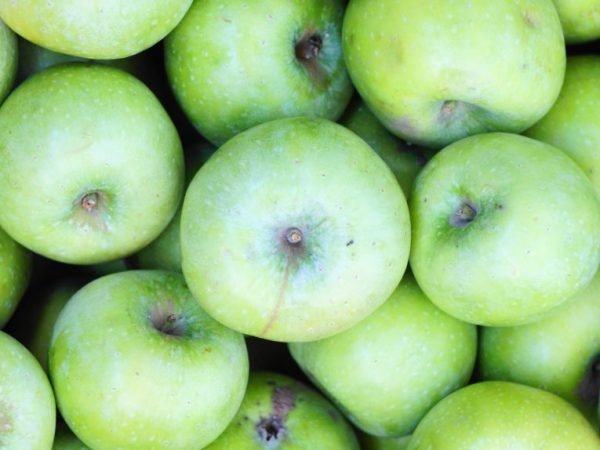
Characteristics of the variety
The apple tree Semerenko is part of the Renets group, it is considered winter. It was officially registered in 1947. Now it is being supplanted by better and more productive industrial varieties, but it continues to be popular in households.
The name of the variety differs, because it is still unknown how exactly the surname of the creator was written: through "e" or through "and"
Description of the tree and fruit
The tree is tall. It takes up a lot of space in the garden, but this is fully compensated for by yield.
The description looks like this:
- The crown is dense, spreading;
- Annual growth of young trees - 50-60 cm, old - 40-45 cm;
- The leaves are light green, oval in shape.
The fruits of this variety have a special appearance:
- The peel is green, in rare cases, a red blush appears;
- A characteristic feature of the fruit is warts, which can reach 5-7 mm;
- Weight - 150-180 g, sometimes up to 200 g;
- The pulp is creamy (less often greenish), juicy, eventually becomes fine-grained and friable
Taste
Simirenko's apples have a special wine-sweet taste, a little spicy and with a pronounced sourness. The pulp contains 8-12% sugar, 0.4-0.7% acids.
The tasting score is quite high: 4.6 points out of 5 possible.

Benefits, harm and calorie content
The fruits contain many useful substances. 100 g of the product accounts for up to 8-9 mg of ascorbic acid, its amount only slightly decreases during storage.
Also apples contain vitamins E, K, PP, B, which affect blood clotting, act as antioxidants.
The pulp and peel are rich in anthocyanins, which are good for the heart. Fruits are rich in iron, potassium, manganese and other trace elements. In the composition of BZHU (proteins, fats and carbohydrates), most of it is fiber and sugar.
Useful properties of green apples:
- Increase appetite
- Strengthens the immune system
- Improves heart function and vascular health
- Increase hemoglobin in case of anemia
- Reduce the amount of uric and oxalic acid in the blood (useful for rheumatism, gout)
- help fight constipation
- Reduce cholesterol levels thanks to pectins
- Improves liver function and removes toxins from the body
- Sunflower seeds contain a lot of iodine, which is necessary for the normal functioning of the thyroid gland.
The calorie content of Semerenko apples is low: only 37 kcal per 100 g, so they are allowed to be included in the diet menu.
The variety is hypoallergenic. It is also advised to eat it for pregnant women and is introduced as the first feeding for babies.
It should be used with caution by people with gastritis and ulcers in the stage of exacerbation. In this case, it is better to bake apples in the oven or cook compote from them so that they do not harm your health.
Yield
The first fruits are harvested 5-6 years after planting.
A young tree, 7-8 years old, gives up to 10-15 kg. But after 10 years, the yield increases to 100-150 kg.
Productivity decreases with age, and yields become unstable. The tree responds well to fertilization. It bears fruit best in fertile soil.
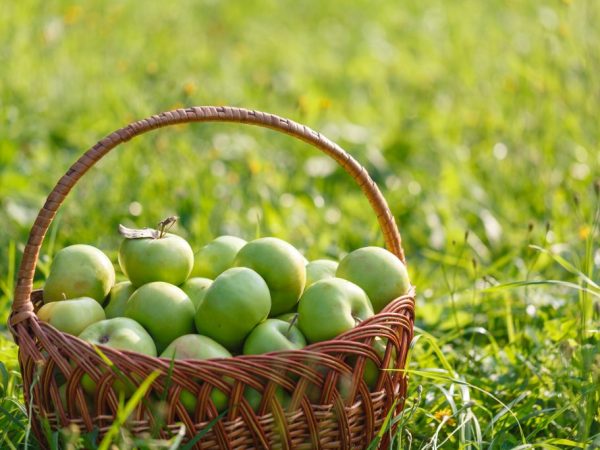
Pollinators
All representatives of the species have a peculiarity - stamens poorly pollinate pistils. It is a natural adaptation that provides genetic diversity.
Since varietal apple trees have the same genome, even pollen from different trees of the same variety will poorly fertilize pistils, and few ovaries are formed.
To increase productivity, pollinators need to be planted nearby - they can increase productivity by 20-50%.
Suitable for this:
- Idared
- Golden Delicious
- Antonova
- Snow Calvil
- Donetsk Kalvil
- Kuban spur
- Memory of Sergeev
- Korey
It is best to plant one pollinator on 7-8 trees.
Winter hardiness
The Semerenko apple variety was bred in the rather warm climate of Central Ukraine. This region rarely experiences severe winters when temperatures drop below -20 опC. Therefore, the winter hardiness of trees is average, they do not tolerate temperatures below -25⁰С.
The positive feature is the ability to regenerate. Even with significant freezing of the shoots, after 2-3 years the tree is completely revived and begins to bear fruit.
In order to prevent the death of branches in cold regions, it is advised to snatch the crowns for the winter. Near the base of the trunk, mulch of peat, straw, sawdust is lined to protect the roots.
From the end of summer, they stop watering the plant in order to increase its winter hardiness.
Disease and pest resistance
Disease resistance is not the cultivar's best trait. It is prone to powdery mildew and scab. These diseases are caused by fungi, affect fruits and leaves, and can easily destroy the entire crop. Therefore, apple trees should be processed regularly.
Pests also often attack the tree. Most often it is the apple moth, aphid, hawthorn, apple weevil, fruit mite, leafworm caterpillar. This species did not develop special resistance. The degree of damage depends on the year. Insect attacks can be prevented by proper care and timely insecticide treatment.
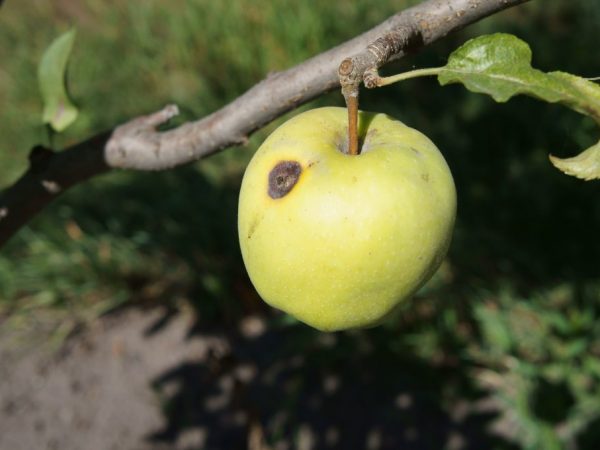
In which regions are they grown
Semerenko is a southern variety, although in recent years it has adapted to the Moscow region, the Leningrad region and even more northern regions.
For industrial cultivation, planting is recommended in the following regions of Russia:
- Krasnodar region
- Stavropol region
- Adygea
- Dagestan
- Rostov region
- North Ossetia
- Chechnya
- Ingushetia
- Astrakhan
- Kalmykia
In Ukraine, apple trees are popular in Lviv, Ternopil, Transcarpathian, Ivano-Frankivsk, Volyn regions, as well as near Sumy, Kiev, Chernigov. Suitable for growing the Crimean coast, Nikolaev, Kherson, Odessa regions.
Advantages and disadvantages
Like any other variety, Semerenko has its pros and cons. You should definitely familiarize yourself with them before planting cuttings.
Advantages:
- Good yield
- Early fruiting
- Drought tolerance
- The fruits sit firmly on the branches and do not fall off from gusts of wind
- Apples are stored for a long time
Disadvantages:
- Low resistance to frost, which does not allow growing apple trees in the north
- Sensitivity to scab and powdery mildew
- A thickened crown requires frequent pruning
- Low self-pollination and self-fertility
- Breaks in fruiting in old trees
The disadvantages will not be so significant if you properly care for the apple tree. For example, in the northern regions, the crown is covered for the winter, and the roots are protected with mulch. Timely fungicide treatment will prevent disease. Unstable yields in old age are fully compensated by the abundant fruiting of young trees.
Landing
When planting an apple tree Semerenko, it should be borne in mind that she loves fertile soil with good aeration. He also needs a large area for growth due to the spreading and wide crown.
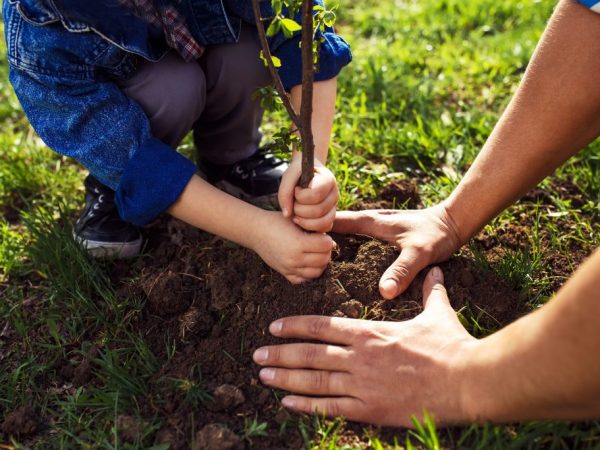
Timing
Cuttings can be planted in autumn or spring. The advantages of autumn planting are better rooting and earlier fruiting. In spring, there is less chance that a young seedling will freeze in winter. Such terms are suitable for regions with cold climates and harsh winters.
In autumn, trees are planted from late September to mid-October. The deadline is 2-3 weeks before the expected frost occurs. In spring, planting is carried out from mid-April to mid-May. In the south, this can be done even from the last days of March.
Preparing for landing
You need to prepare the pit and the seedling for planting. The place should be excavated in advance - 4-5 weeks in advance. For spring planting, it is prepared in the fall.
The size of the pit depends on the type of soil and the size of the seedling. If the soil in the garden is fertile and loose, it is enough to make a hole 80x90 cm. On the clay, the depth is 90-100 cm, and the width is 1-1.5 m. Large holes are necessary for large, 2-3 year old seedlings.
The dug clay soil is mixed with sand, peat and manure, and drainage from coarse sand, expanded clay or pebbles is poured onto the bottom.
The seedlings are carefully examined. All damaged and rotten roots must be removed. Healthy roots are shortened by 3-4 cm. If the cuttings are purchased in the fall, and planting is planned in the spring, they are added dropwise.
To do this, they dig a trench 50-60 cm deep and 30-40 cm wide. Cuttings are placed there at an angle of 45⁰. Then sprinkle them up to half with earth, and cover them on top with foil or straw.
Landing technology
Correct planting technology allows to achieve fast rooting and high survival rate of seedlings. The process consists of several stages:
- A stake with a height of 1.5-2 m is driven into the bottom of the pit
- In the center, a mound of fertile soil with fertilizers is poured
- A seedling is attached on top, carefully spreading the roots over the mound
- They fill the hole with soil, ram the earth with their hands so that its level near the trunk is slightly lower
- Pour 2-3 buckets of water under the seedling
- Sprinkle the planting site with mulch
When burying a seedling, be sure to monitor the root collar. It should be 3-4 cm above the ground. The distance between trees and between rows is 4-5 m. If semi-dwarf rootstocks are planted, it can be reduced to 4-4.5.

Care
The yield of Simirenko largely depends on whether the tree is properly looked after - to get tasty apples, you should ensure:
- Watering
- Pruning
- Top dressing
- Shelter for the winter
- Protect against diseases and pests
Watering
The Semerenko variety is drought tolerant, so it does not need to be watered often. Most gardeners agree that the tree needs additional water no more than 3 times per season:
- At the very beginning of summer
- During the period of fruit filling (late July or early August)
- Harvesting field, just before frost
In cold regions, it is recommended to water apple trees for the last time in the first decade of August. This way the roots will have less risk of freezing in winter. After the last watering, be sure to cover the ground around the trunk with mulch.
Up to 10-12 years old, the number of buckets of water corresponding to their age is poured under one tree. Then 10-12 buckets are added for each watering.
Pruning
In the Semerenko variety, the crown is prone to thickening, so annual pruning is a mandatory procedure: if this is not done, the apple tree will hurt, and the yield will decrease.
In the first 2-3 years, formative pruning is done. Shorten the main branches, remove shoots growing too low from the ground or close to the trunk.
In the future, the crown is thinned out and sanitary pruning is done.It should be noted that the variety bears fruit best on the shoots of the first year. Therefore, you only need to cut off those young branches that have given more than 60 cm of growth per season. During sanitary pruning, broken and dry branches, “tops” growing vertically upward, and branches located close to the ground are to be removed.
It is best to prune the tree in early spring, when the sap has not yet begun to circulate in the trunk. In summer, you can also thin out the crown. At this time, diseased branches and young shoots are removed, which do not produce fruits and provoke thickening of the crown. Sharp garden shears or other tools are used for the procedure. The cut points are covered with garden pitch.

Top dressing
Fertilizing correctly will increase yields. Top dressing is especially important if the garden is set up on soils with low fertility. After all, this variety loves nutritious soil, on which it grows and bears fruit better.
Fertilizers are applied twice a season - in spring (April-May) and in autumn (September). They are dissolved in water and poured into grooves located 1.5 mt of the barrel. For mature trees, the groove depth is 45 cm, for young seedlings (up to 3 years old) - 15 cm.
For spring feeding, you will need nitrogen-rich fertilizers:
- Urea
- Saltpeter
- Superphosphate
- Manure
- Chicken droppings
In the fall, the tree should be prepared for the winter cold and the laying of the future harvest should be ensured. To do this, you need to add potassium and phosphorus. Nitrogen is contraindicated at this time, as it can stimulate growth.
With a lack of trace elements, complex fertilizers are used throughout the season. Kemira Lux, Aquarin and other mixtures intended for the orchard have proven themselves well. They contain iron, boron, sulfur, magnesium, copper, zinc.
Shelter for the winter
In warm regions, it is not necessary to shelter apple trees for the winter. Although it is recommended to sprinkle the soil around the trunk with mulch. If the temperature drops steadily below 20 ° C, it is necessary to cover the trunk and crown. It is best to use a special agricultural film for this.
Disease prevention
According to its characteristics, the variety is not highly resistant to diseases and pests. It is often affected by powdery mildew, scab, black tree crayfish, aphids, moths, leafworms, and ticks. Therefore, it is necessary to constantly carry out disease prevention and insect control. It starts in early spring and continues until mid-autumn.
To prevent diseases, apple trees are treated with urea, biological products Zircon, Agrovertin, fungicides Horus, Skor, Switch. For insect control, urea, Karbofos is suitable. They also use folk remedies - a solution of soap, infusion of garlic and tobacco.
So that pests attack less apple trees, the trunk is whitewashed with lime. It is useful to plant mustard, tansy, onion, garlic, calendula, rye in the garden. These plants repel insects with their smell. If the tree is not too damaged, beetles and caterpillars can be harvested by hand.
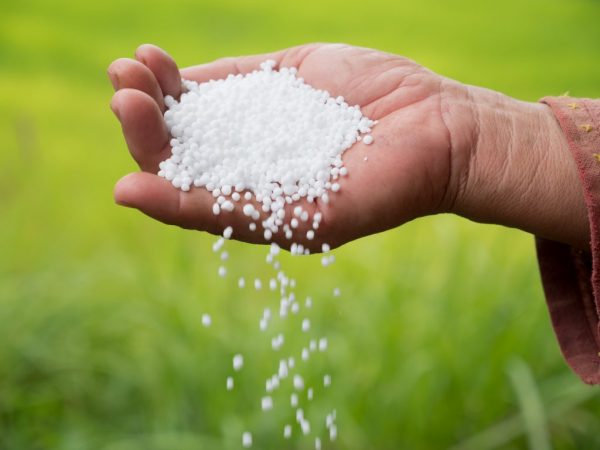
Features of ripening and fruiting
Fruiting of the variety begins as early as 4-5 years old.
At 7 years old, more than 10 kg of fruit can be harvested from an apple tree. Yields peak after 10 years. At this time, 100-150 kg of fruit are obtained from one plant.
For 20-25 years, the yield is stable. The same volume of products can be received annually.
Older trees fail. They produce products first in a year, and after 35 - once every 2 years. Therefore, gardeners recommend uprooting such trees and planting new ones in their place. An old apple tree can be rejuvenated. To do this, cut off almost the entire crown, leaving only a quarter. After that, the harvest begins to get more stable.
The tree begins to bloom at the end of May. The fruits ripen all summer. Size increases rapidly, reaching a maximum at the end of September.
Harvesting and storage
They start collecting products at the end of September. I only do it manually. The weather outside should be dry and sunny.
Apples hold tightly to the branches, rarely fall, even in strong gusts of wind and storms.After collecting, they are carefully folded into boxes. It is advisable to wrap each fruit in paper, or sprinkle with wood shavings between the rows.
The harvest is stored in a cool room. The temperature should be in the range of 1-8 ° C, and the humidity should be 85-90%. It is desirable that this place is well ventilated.
If everything is done correctly, then the fruits will lie until the end of April. To extend the time, they are treated with a propolis solution.
Apples lose their juiciness during storage, the flesh becomes loose and grainy. Therefore, many gardeners prefer to recycle them. Juices are obtained from fruits, they are dried, jams and preserves are made.
Varieties and variants
The appearance of the apple tree, yield and life expectancy depend not only on the variety, but also on the stock. Semerenko can be grafted into several varieties:
- Vigorous or clonal. Height is about 7 m, lives for more than 50 years, begins to bear fruit at 6-7 years. Suitable for areas with high groundwater table.
- Semi-dwarf. It grows by 4-5.5 m, lives up to 40 years, the first fruits are obtained in 4-5 years.
- Dwarf. Height - 2.5-3 meters, life expectancy - 25-30 years. The apple tree begins to give harvest already for 2-3 years.
- Columnar. It grows up to 2.5-3 m, has a narrow columnar crown, which makes it possible to plant trees close to each other. Fruiting from the second year. Lives for 15-20 years, but high productivity lasts up to 10-12 years.
Apple trees on a vigorous rootstock are best planted in small backyard plots. They provide the most production. Dwarf and columnar rootstocks are used for industrial planting. Picking apples from short trees is much easier.
Reviews of gardeners about the variety
The Semerenko variety, which is part of the Renet group, has been grown for more than a hundred years. In some regions, it gave way to more modern varieties, but in private households it does not lose its position.
The gardeners' comments on the apple tree are positive. Many of the fruits resemble childhood, because they grew in grandmother's garden. True, someone claims that the taste is too sour. But this is everyone's business.

